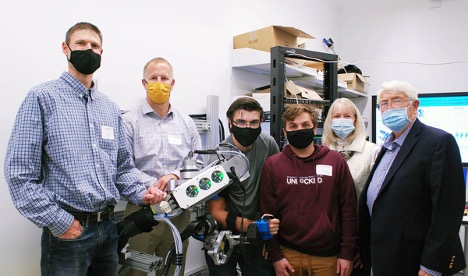New federal tax rules taking effect in 2026 may affect how your charitable gifts are treated. Learn more about how you can maximize the impact of your generosity.
On July 4, 2025, the One Big Beautiful Bill Act (OBBBA) became law, reshaping several rules that affect charitable giving. Below is a summary with practical planning pointers.*
The Big News: Everyone Can Now Deduct Charitable Gifts
Starting with 2026 tax returns, taxpayers who do not itemize may deduct cash gifts to qualified public charities up to:
- $1,000 for single filers
- $2,000 for married filing jointly
Important: Gifts to donor-advised funds (DAFs), supporting organizations, or private foundations do not qualify for this new universal deduction.
Key Changes by Donor Situation
If You Take the Standard Deduction (about 90% of taxpayers):
- Universal charitable deduction: up to $1,000/$2,000 for eligible cash gifts (2026+).
- Higher standard deduction (2025): $15,750 (single) / $31,500 (married filing jointly), indexed thereafter.
- New seniors’ deduction (2025–2028): an additional $6,000 per eligible person (65+). Available only if you take the standard deduction; income limits apply; this is in addition to the normal “age/blind” add-on amounts under prior law.
Smart move: If you don’t itemize, consider annual cash gifts up to your universal limit—and if you’re 65+, evaluate eligibility for the temporary $6,000 seniors’ deduction.
If You Itemize Your Deductions:
- New 0.5% AGI floor (2026+): Only the portion of your charitable gifts above 0.5% of AGI is deductible.
- Cap for top bracket (2026+): The value of itemized charitable deductions is capped at about 35% even if your marginal rate is higher.
- 60% of AGI limit for cash gifts is permanent.
Smart moves: “Bunch” multiple years of giving into one tax year to clear the 0.5% floor; consider a DAF to time large itemized gifts (note: DAF gifts don’t qualify for the universal deduction); front-load pledges in a chosen year to exceed the floor.
Business Owners:
- Corporate 1% floor (2026+): C-corp charitable deductions are subject to a 1% of taxable income floor for the year. Carryforwards of excess may still apply under existing ceilings.
When Do These Changes Take Effect?
| Change | Effective Date |
|---|---|
| $1,000/$2,000 non-itemizer cash-gift deduction | 2026 tax year |
| 0.5% AGI floor & ~35% cap (top bracket) | 2026 tax year |
| Estate & gift exemption increased to $15M/$30M (indexed) | 2026 tax year |
How We Can Help
- Provide gift acknowledgment letters for tax purposes
- Discuss multi-year pledge arrangements
- Explore planned giving options under the new rules
- Connect you with estate planning resources
Important Reminders
- Keep good records: Save receipts/acknowledgments for all gifts.
- Consult your advisor: Details vary (e.g., SGO eligibility, state participation, seniors’ deduction thresholds).
- Give from the heart: Tax benefits help—but your impact matters most.
*Courtesy of Viken Mikaelian, CEO of PlannedGiving.com, Major Gifts LLC and Philanthropy.org
Smart Moves You Can Make Now

Student Success
Plan for the universal deduction (2026): Non-itemizers can claim $1,000/$2,000 for eligible cash gifts to public charities.

Sustainable Solutions
Bundle bigger gifts: Combine several years (or use a DAF) to rise above the 0.5% AGI floor when itemizing.

A Thriving Idaho
If you’re 65+ (2025–2028): When taking the standard deduction, review eligibility for the temporary $6,000 seniors’ deduction—and still layer on the universal charitable deduction for cash gifts.

A Thriving Idaho
For corporations (2026+): Structure multi-year pledges so annual giving surpasses the new 1% floor.
Let’s have a conversation. Contact us today.
Become a UI Foundation Insider
Do you want to receive exclusive email updates directly from the UI Foundation?
Get direct access to a member of our team, who will share stories about the impact of your gifts as well as tax and estate planning information.
